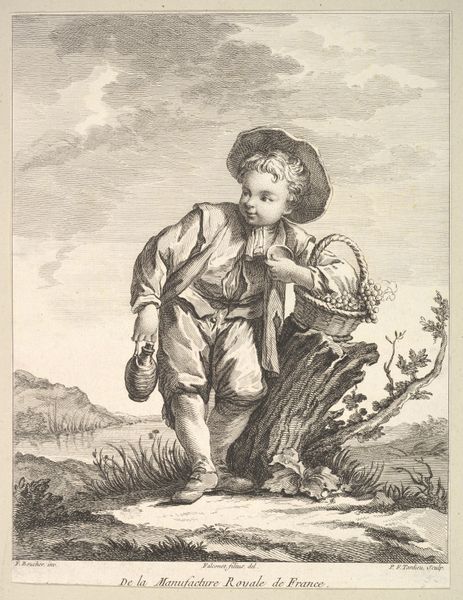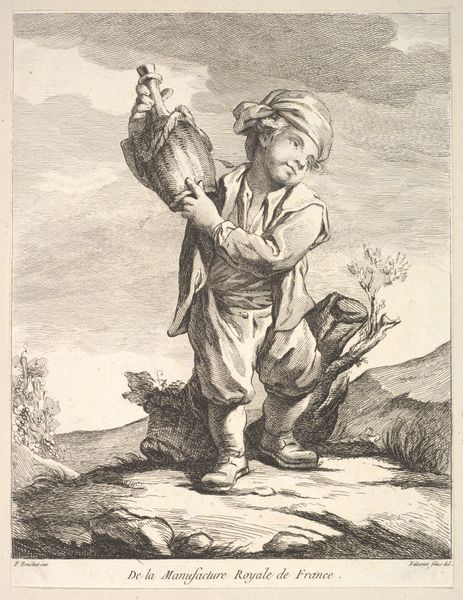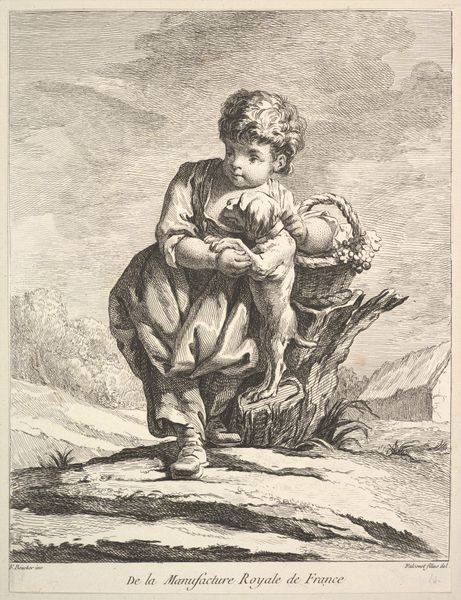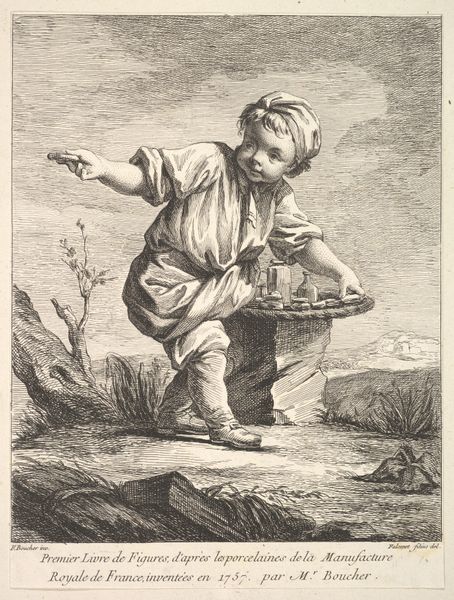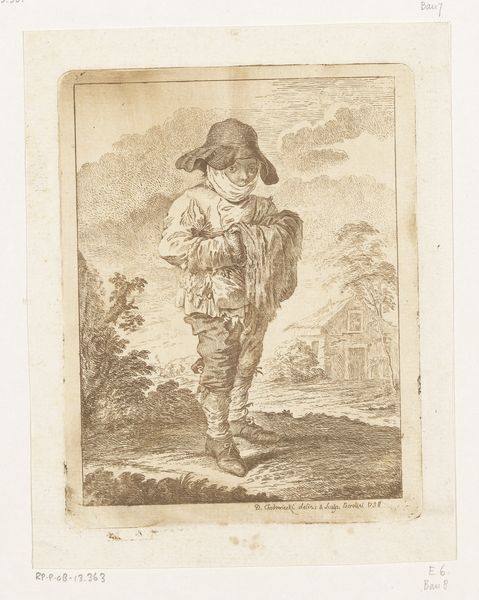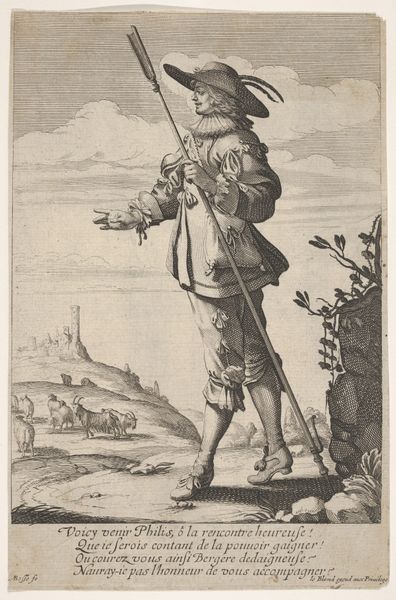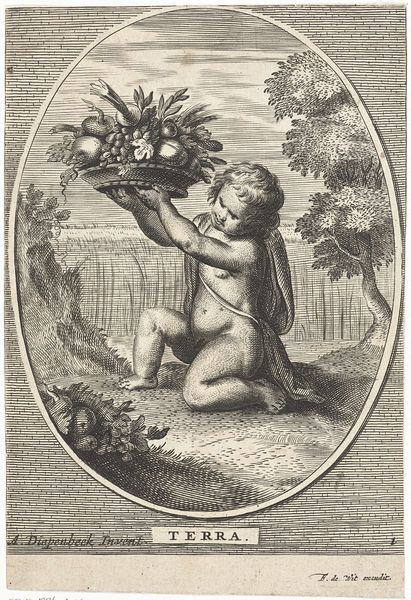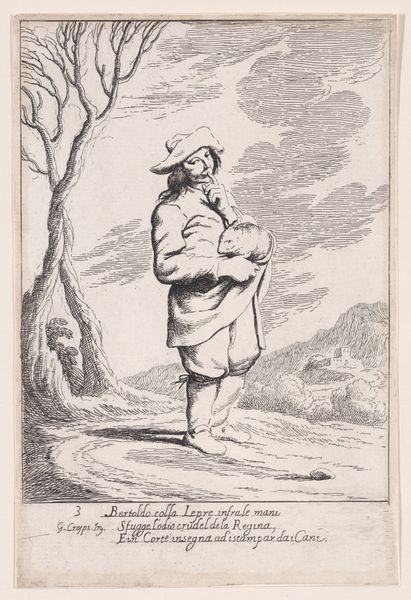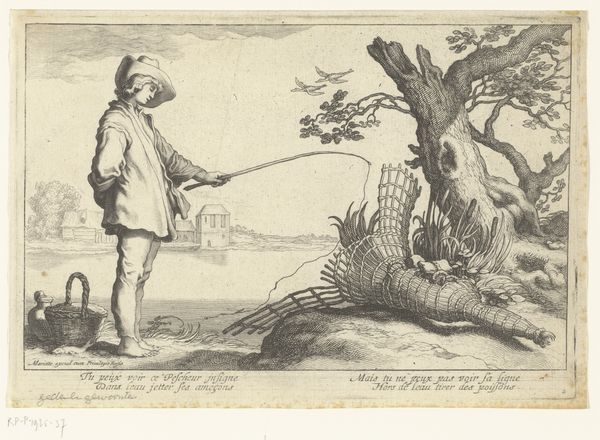
Little boy holding a wreath and basket of flowers, from Deuxième Livre de Figures d'après les porcelaines de la Manufacture Royale de France (Second Book of Figures after porcelains from the Manufacture Royale de France) 1757 - 1771
0:00
0:00
drawing, print, engraving
#
portrait
#
drawing
# print
#
pencil drawing
#
portrait drawing
#
genre-painting
#
engraving
#
rococo
Dimensions: Sheet: 9 3/4 x 7 1/2 in. (24.8 x 19 cm)
Copyright: Public Domain
Editor: This is "Little boy holding a wreath and basket of flowers," a print made between 1757 and 1771 by Pierre François Tardieu after an image by François Boucher. It feels very classical, yet somehow also quite playful with its Rococo style and details. What draws your eye? Curator: The wreath is incredibly significant. Throughout history, wreaths, especially those made of flowers, symbolized cyclical renewal, victory, honor, and even mourning. Note how delicately the boy holds it aloft, almost as if offering it. What do you think the gesture might mean? Editor: I suppose he could be crowning someone or something? It's interesting how the wreath mirrors the basket he's also carrying; the flowers suggest nature and perhaps innocence? Curator: Exactly! The mirroring isn't accidental. Consider the echoes of classical imagery – think of putti and allegorical figures of Spring. The wreath and basket connect him to those traditions, suggesting themes of abundance, beauty, and a prelapsarian innocence. The single sprig rising to meet his offering. Isn't it evocative of potential and growth, of a connection between childhood and nature's bounty? What is striking, to me, is this sense of yearning to extend into the world beyond the self. Editor: I hadn't considered that. I was mainly focused on the aesthetic elements. Curator: Rococo loved its ornamentation, but even those swirls and flourishes carry symbolic weight. Nothing is merely decorative. Editor: I guess I have a lot more to learn about symbolism! This makes me appreciate it a whole lot more now. Curator: Symbols layer art with cultural memory; looking closely is like reading a visual history book.
Comments
No comments
Be the first to comment and join the conversation on the ultimate creative platform.
